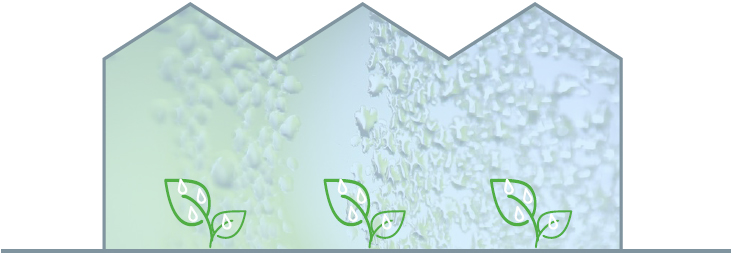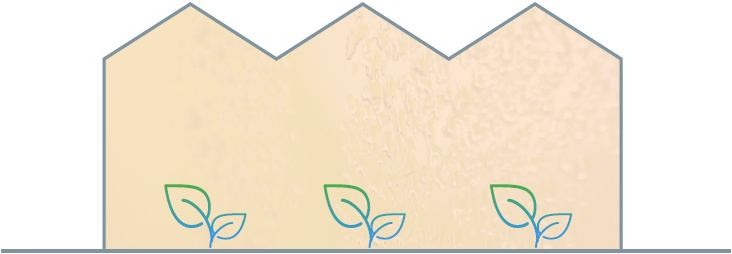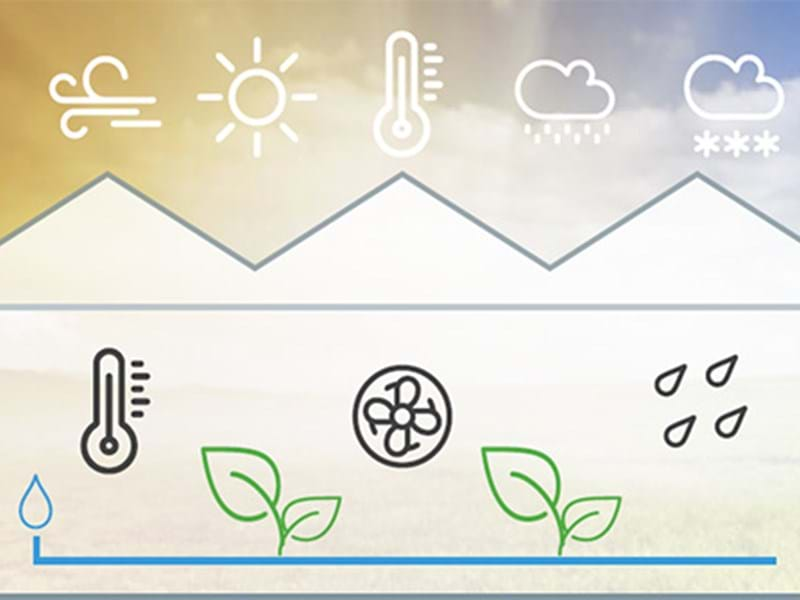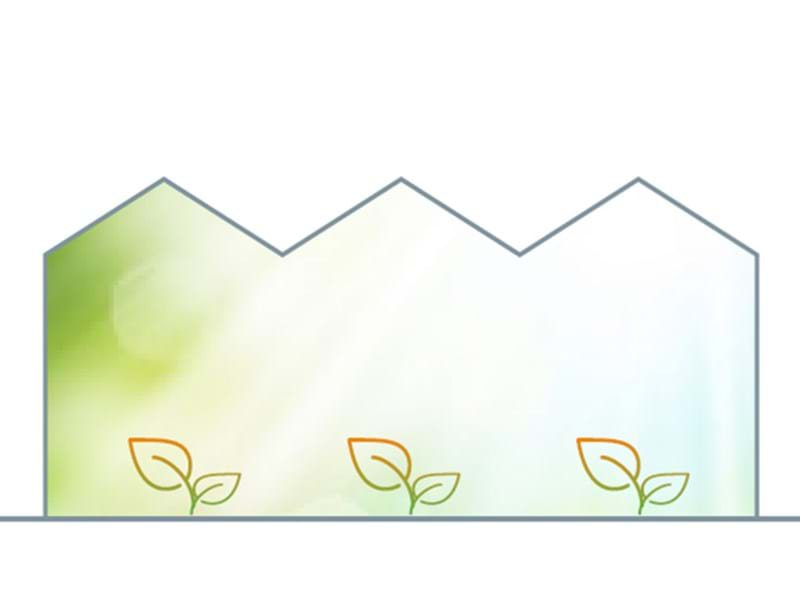Controlling Humidity in the Greenhouse
A rain of condensed water drops in a greenhouse could be fatal, even deadly, and must be avoided.
If the humidity levels are too low in the greenhouse, the plants grow stocky in an attempt to lower transpiration, or even worse in extreme cases suffer from water stress. This reduces crop yield and quality. On the other hand, if the levels are too high you will end up with nutrient deficiency and quality problems due to low transpiration. This means an increased risk of condensation and fungal diseases.

Too high of humidity:
Nutrient deficiencies and fungal diseases

Too low of humidity:
Nutrient deficiencies and fungal diseases
A single condensed water drop falling down on for example a rose can make it unsaleable. And it's not just the appearance of the plants that is threatened. Water drops can help various fungi get started on the plants, as well as other plant diseases such as botrytis or grey mould.
For the same reasons dew formation in a greenhouse can be an absolute catastrophe for some plants. The dew point is a function of temperature and humidity. As a general rule heat emission must be prevented in order to keep the leaf temperature as near as possible to the temperature of the air. It's enough for the leaf temperature to be just two or three degrees lower to create a disaster for the grower. The climate screen helps you remain the leaf temperature steady.
Humidity control
with climate screens
A key feature of a Svensson climate screen is that water vapor can easily pass through it. This helps prevent extreme humidity levels and the formation of condensation on the screen. Once the humidity reaches the cold greenhouse glass roof, condensation takes place and consequently humidity level lowers.

Humidity transport of Svensson screens
The dew formed on the glass runs down along the sides and diverts through drainage, while any drops that fall from the roof are caught and gradually dried out by the screen. The screens also exploit the capillary force of the textile fibers. Water droplets are trapped and deflected by the capillary action, so they never reach a size that will cause them to fall on to the plants below. The underside of the screen absorbs the heat coming from below, preventing condensation and dew formation. At the same time, the leaf temperature is increased through a so-called reduced radiation exchange between leaf and ceiling.
Although, as the crop matures it can produce such high levels of transpiration that you might still need to open the screen a fraction to release excess humidity. We call this a screen gap, and it helps to prevent excessively high Relative Humidity (RH) levels below the screen.

The left diagram shows an example of a varying screen gap based on an excessively high RH. This example shows how a small gap of 1% is applied when the RH value exceeds 85%. At an RH of 90% the screen gap is at its maximum of 5%.


